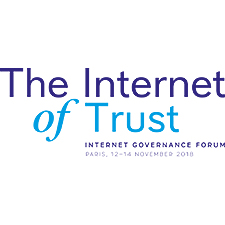What Does the Data Say? Analysing the Gender Digital Divide
13 Nov 2018 09:00h - 10:30h
Event report
[Read more session reports and live updates from the 13th Internet Governance Forum]
Connecting more people via the Internet is accompanied by the creation of greater gender inequality. Women face general challenges, such as affordability of devices and connectivity, as well as specific ones, such as cultural issues. Some measures to mitigate the gender gap were discussed, such as reducing prices, removing taxes on low-cost devices, and tailoring capacity building to the needs of women.
The moderator started the session by providing an overview of the ‘After Access’ project, which conducted a survey and case studies in 20 countries from the Global South.
Ms Alison Gillwald, Executive-Director of Research ICT Africa (RIA), explained the selection of countries and methodology of the After Access survey. The project goes beyond big data and supply-side data to develop a model based on demand-side data. Gillwad presented some of the findings of the research.
Ms Aileen Agüero, Institute for Peruvian Studies, commented on other findings, focusing on Latin America. She mentioned that even when women have online access, other challenges remain, such as continuing stereotypes. In addition, cross-cutting gaps, such as the urban-rural divide and gender gaps in regard to online money usage remain. In regard to the later, private sector initiatives, such as M-Pesa in Kenya, and public policies, such as introduced in Paraguay, can facilitate women’s access to online money.
Ms Helaini Galapaya, Board Member at Global Partnership for Sustainable Development Data, commented on the results of the ‘After Access’ survey in Asia and the barriers to gender equality. The affordability of mobile phones is still a significant issue. While these devices are cheap, they are increasingly less affordable among the parts of society with less income. In addition, a lack of skills in the proper use of these devices or to meaningfully use the Internet, sustains the gender gap. Certain regions also face specific challenges, such as the lack of a reliable electrical infrastructure to charge mobile phones.
According to Gillwald, a digital paradox is emerging: the success in connecting more people is accompanied by the creation of greater inequality, that is, a gap between those who are barely online and those who are skillful in using the Internet. While the quantitative data of the ‘After Access’ survey is nationally representative, the limitations of the data collected also stand out. One of the limitations is the difficulty in understanding the interrelated nature of inequality. Combining different sets of data allows richer conclusions, such as that poor urban women access the Internet more than rural men. This helps to understand the problems and prioritise strategies to mitigate them. Some short-term strategies include reducing prices and getting rid of taxes on low-cost devices.
Ms Muge Haseki, University of Pennsylvania, presented some results and case studies from the project ‘One world connected’. One result from the project is that some barriers confront all people, such as financial constraints and access to infrastructure. However, women face some unique challenges, such as Internet access that is controlled by husbands or mothers-in-law. She provided the example of a project that built telecenters that aggravated the gender divide, because women could not attend alone. It is important to adapt projects to the specific needs of women, such as to communicate with other women and to obtain information related to motherhood and health. Digital training programs need to provide a mixture of basic literacy skills and to address these needs.
Ms Claire Sibthorpe, Head of GSMA Connected Women, highlighted barriers related to the cost of devices and connectivity, and socio-cultural issues. She mentioned that GSMA conducts an annual study looking at the gender gap related to Internet use, based on operators’ data, qualitative research, and household surveys. According to data, people in low income countries are 26 percent less likely to access the internet; women are 30 percent less likely to use mobile money. Affordability and ownership of devices and connectivity are important, but even if women earn their own income, they are usually not the decision-makers in purchases. Access to technology is only one side of the coin: agency and self-determination are also important.
The questions from the audience were related to the role of states and international organisations, and to difficulties in gathering and improving research indicators, specially concerning LGBT communities.
By Marilia Maciel
Related event

